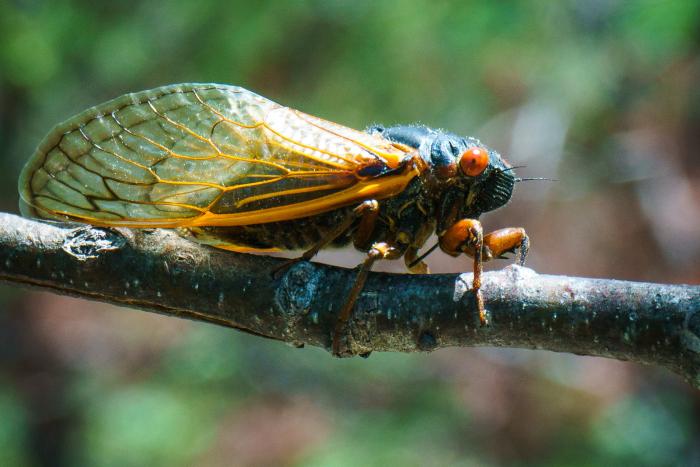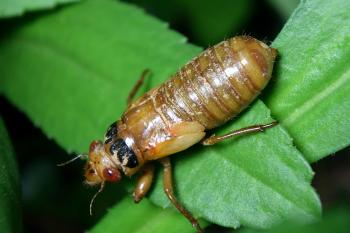
Ever hear a loud “buzzing” in the summertime, but not been able to find out where the noise was coming from? Chances are, it was coming from high in the trees, from large groups of cicadas singing.
Cicadas are insects with six legs and long, clear wings. They hatch as nymphs from eggs and live underground for anywhere from 13 to 17. While living underground, the nymphs feed on juices from tree roots. When ready, the nymphs tunnel up to the surface and climb up trees, where they molt to become winged cicadas.
As they molt, they leave behind their hardened skin, which turns shell-like. You can often still find these on trees, even when the cicada itself has flown away! The adults then sit in trees and sing their loud, buzzing songs to attract mates. Once cicadas mate, they lay eggs in trees, the eggs hatch, and the nymphs crawl underground, starting the cycle all over again.
These articles are written by library staff using library resources such as books, eBooks, and databases. Information can vary from book to book and database to database. Tickle Your Brain is meant to be a jumping off point for starting conversations about new topics of learning. It is not to be used as an authoritative resource.


- Cicadas are very nutritious – they're high in protein and low in fat. Many wild animals eat them, and some people eat them too!
- Cicadas have water resistant wings, meaning that when their wings get damp from dew or rain, the water slides right off.
- Cicadas have five eyes total – two large ones, and three small ones in between the large ones.
- There are over 3,000 different species of cicadas.
- Some Bugs, by Angela DiTerlizzi
- Joyful Noise: Poems for Two Voices, by Paul Fleischman
- A Walk Through the Rain Forest, by Martin Jenkins
- Ultimate Bug-opedia: The Most Complete Bug Reference Ever, by Darlyne Murawski
- Cicadas, by Mari C. Schuh
